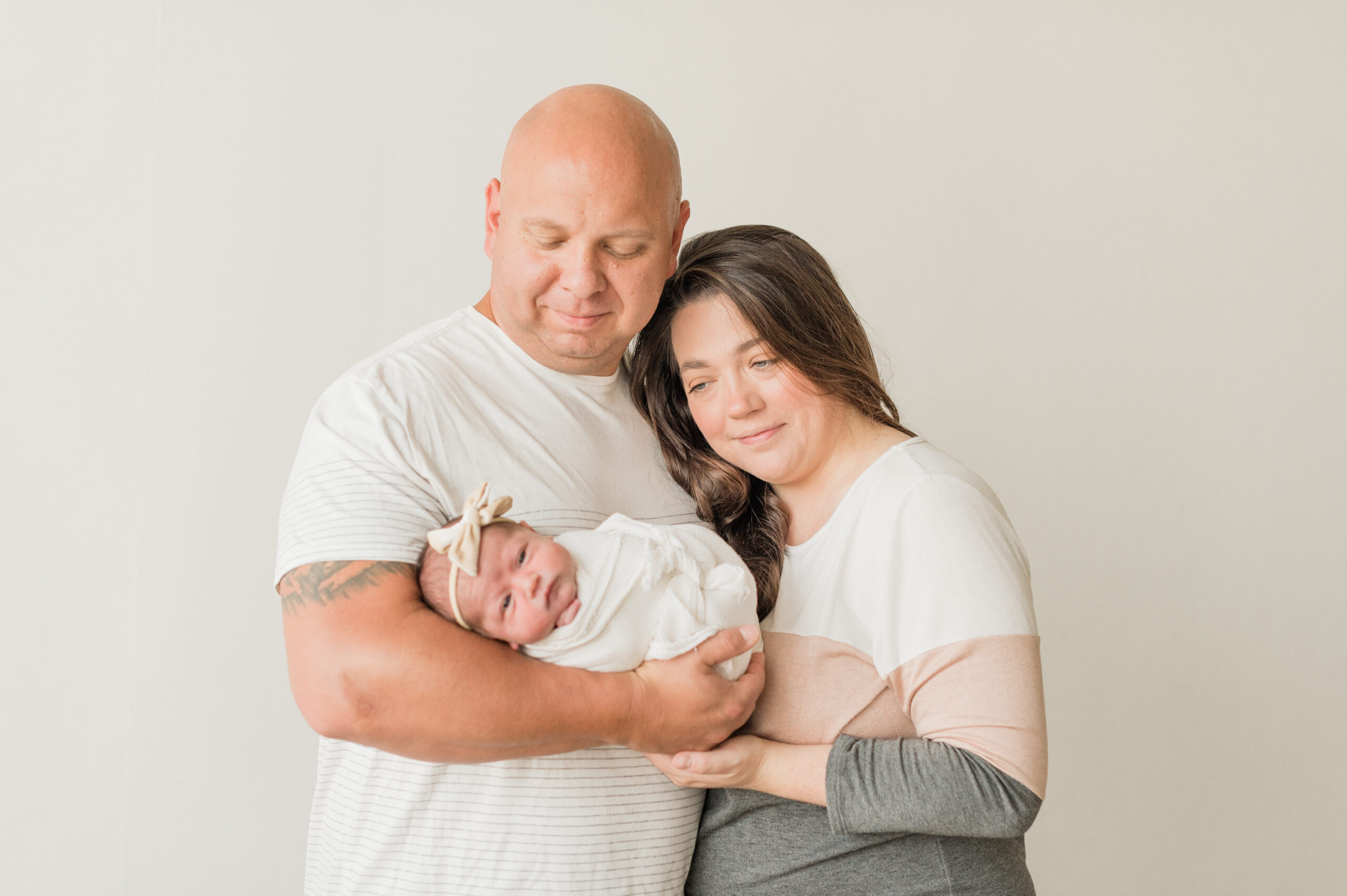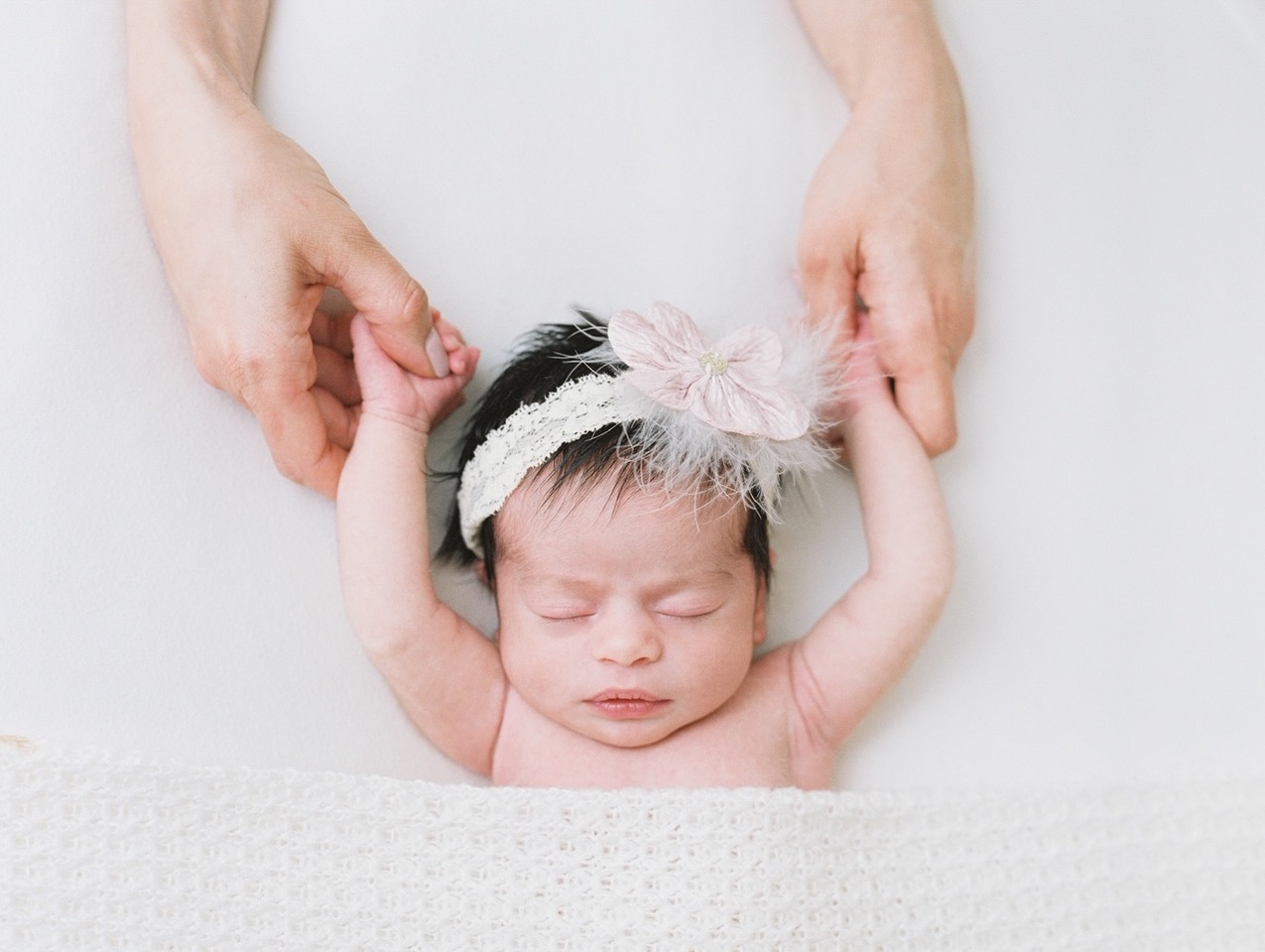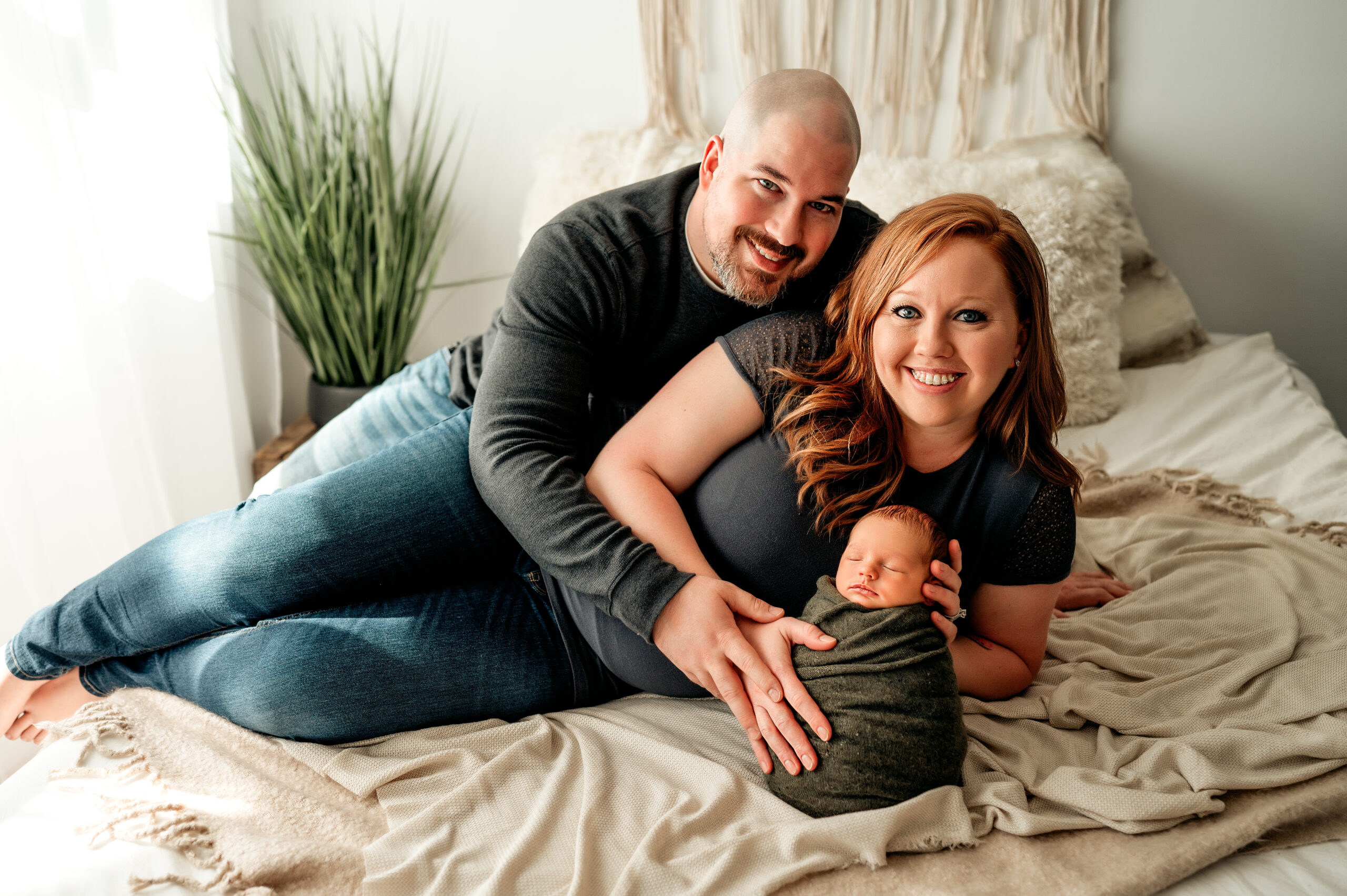A fertility journey we never saw coming
Lindsay and her husband excitedly planned for their future after saying “I do” in 2018. They would spend some time traveling and she would finish her law degree. Following an eventful year as newlyweds, the happy couple would focus on growing their family.
Everything was going as planned and in 2019 they were ready to add a little one to the mix. They tried for months and months, but nothing happened. Lindsay went to her OB/GYN looking for answers and was referred to Dr. Meike Uhler at Fertility Centers of Illinois to figure out what was going on.
A big surprise
The couple was shocked by the results of their fertility testing. Their diagnosis was male and female factor infertility due to azoospermia and polycystic ovary syndrome (PCOS). Never in a million years did they expect to be 1 in 8 couples who struggle with infertility. She was young and healthy, and, even more surprising, her husband already had kids from a previous marriage.
As a first step, Dr. Uhler referred Lindsay’s husband to Dr. Samuel Ohlander, a urologist at FCI who specializes in male infertility. They spent nine months trying various treatments and, sadly, all were unsuccessful.
They took some time to absorb the news and reassess their goals. Before they talked about wanting one, maybe two, kids and now they felt like they would be lucky if they could have a child at all. But they weren’t ready to give up. Lindsay shared, “It was important for me to be pregnant. It was also important to me to try to use my eggs. That nixed the idea of embryo adoption or adoption.”
They knew their only option would be to use donor sperm. The decision was a lot for them to process, but with time they came around to the idea of at least giving it a try. “Dr. Uhler was so patient,” Lindsay said. “She knew how heavy of a decision that was for us, so there was no rush to make one. She let us make the decision we needed to make and welcomed us with open arms when we came back.”
Choosing a donor
Dr. Uhler provided them with a list of cryostorage banks, and her care team helped them navigate the process of choosing a donor that fit their criteria. Lindsay’s test results showed that she is cytomegalovirus (CMV) negative, and therefore had to use a donor that was also CMV negative (if you are CMV negative, using a CMV positive donor increases the chances slightly that you contract the virus or pass it on to your baby).
Lindsay and her husband browsed the different options, which she described as surreal. “No one imagines sitting at a kitchen table picking out who the potential genetic father of their child is going to be. It was such a bizarre experience.”
Coming to terms with the circumstances and choosing a donor wasn’t easy for her husband, either. “I think that it was overwhelming for him in a different way than it was for me. My husband is a very internal person. I ended up picking a handful [of donors] and he would get to choose the final one. That way he didn’t have to go through the whole process.”
The CMV negative status narrowed down the donor pool quite a bit. Additionally, they wanted someone who shared similar features to her husband. In the end, they were able to find a donor who fit the criteria.
Despite the challenges of picking a donor, there was a light at the end of the tunnel. Lindsay explained, “I will say once we chose a donor, we kind of forgot about all of it in a very lighthearted way. Picking the donor was the heaviest part for both of us. It was what gave us the most anxiety. What kept us up at night. But once we chose our donor, it was like, ok, it’s in FCI’s hands now. We’ll get our donor shipped, we’ll go to FCI for our treatments and hopefully, everything works out.”
Trying for a baby
In the summer of 2021, they did two rounds of intrauterine insemination (IUI) which were both unsuccessful. They considered a third round, but after reviewing their options they decided it was in their best interest to move forward with in vitro fertilization (IVF).
Their IVF cycle started right after Thanksgiving and Lindsay admits that starting IVF treatment, especially during the holidays, was a lot to manage. “No one could have prepared me for the process at all. The medications, the emotional rollercoaster, on top of general stress you feel around the holidays.”
Even when things felt chaotic, Lindsay tried to find the positive. “It was also a bonding experience for my husband and me. He’s a firefighter and EMT so I would go to his work and he’d give me the shots. If my husband was unavailable, I would ask my neighbors for help, and it was a rally of people around me. At that point, enough people in your circle know because they’re helping you with everything and everyone’s excited for you and providing support. It was really nice having that community support while I was on this emotional rollercoaster.”
Between holidays, Lindsay had her embryo transfer and anxiously awaited to see if they would get a Christmas miracle. Although her hopes were high, her confidence was low. “With the IUIs failing I expected the IVF to fail. I don’t know if that was just a way to protect my emotions so that if it did fail, I wouldn’t be as disappointed as I knew I could be.”
Lindsay took an at-home test the day after Christmas and couldn’t believe her eyes when she saw two lines appear. They were having a baby! “I was dumbfounded. My husband was working that day and I had just gotten a new foster dog, so I was in over my head. We had a new dog in the house the day after Christmas and I was pregnant.”
Welcoming a baby girl
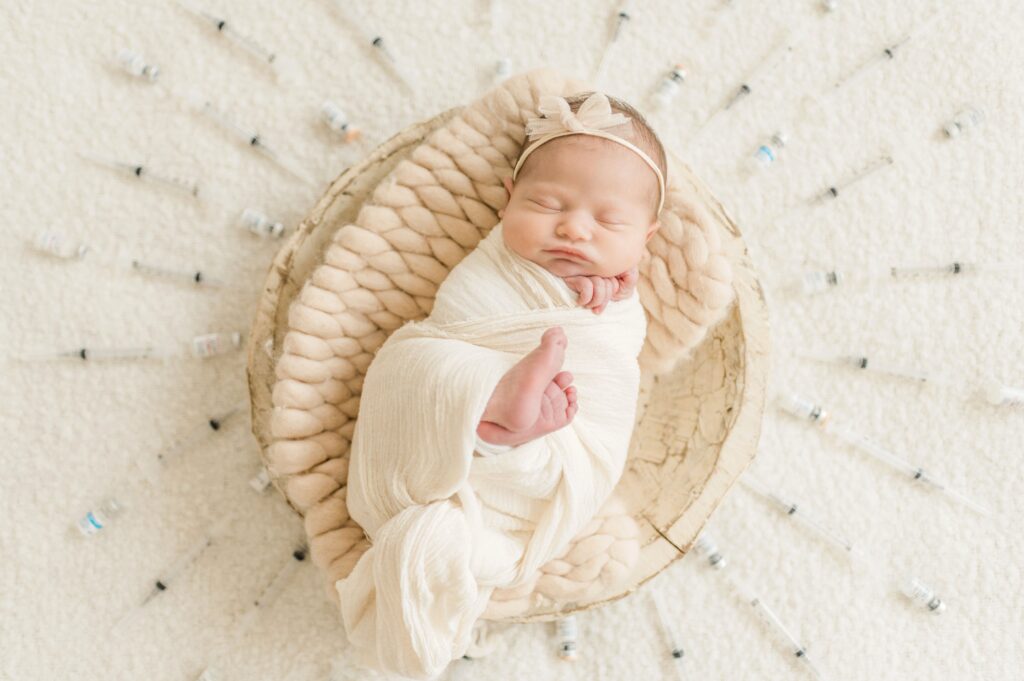
The nine months that followed were, “pretty uneventful,” compared to fertility treatments. After going through IVF, it was very important to Lindsay to have a non-invasive pregnancy. She hired a midwife who helped welcome her daughter into the world.
Describing her now eight-month-old daughter, Lindsay gushed, “She has the most beautiful blue eyes I have ever seen. She’s a little spitfire. Very sassy. Always keeping us on our toes. It’s been really cool watching her go from sleeping 20 hours a day to having a personality and finding things that make her smile.”
When talking about her daughter’s relationship with her husband, she shared, “he is absolutely a girl dad. She lights up every time she walks into the room. It’s all about her.” Lindsay continued, “We can’t imagine life before her, and we are looking forward to all the adventures yet to come. She was absolutely worth the wait and the struggle.”
Life after treatment
After everything they’ve been through, Lindsay and her husband have become advocates for talking about fertility and infertility, especially with respect to male factor. “It wasn’t until my husband started talking about our journey to his friends that they felt comfortable opening up and talking to him about their own similar experiences they were having. No one really talks about it, so then everyone feels alone and isolated and like they’re the only ones going through it. The more we talked about it, the less alone we felt. Even talking to my neighbors about the IVF process people will tell me, oh yeah, I had to do this 20 years ago, 30 years ago and no one talked about it back then. My husband and I are trying to change that.”
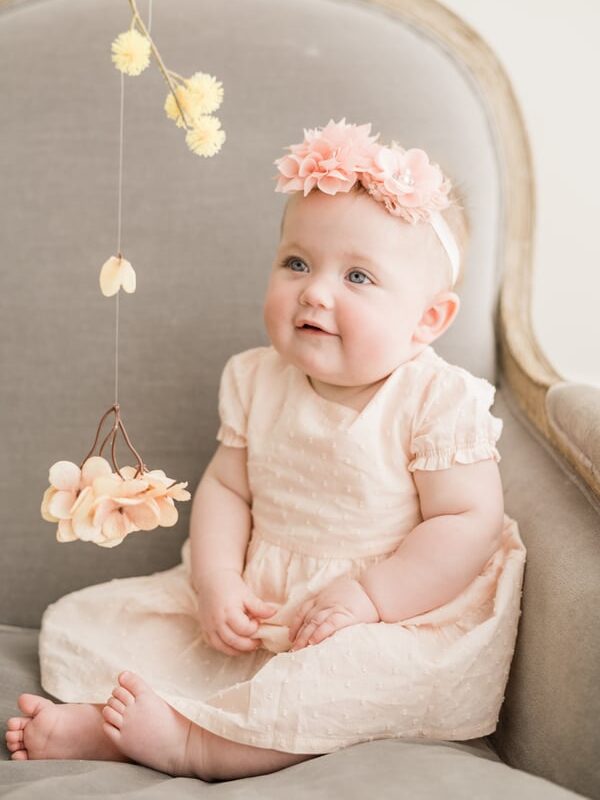
And while using a donor was a difficult decision at first, it’s not something that they dwell on. “We don’t hide it. We plan to tell our daughter in an age-appropriate way. It’s definitely not taboo to talk about in our house, but it’s not something we think about every day.”
When speaking about her experience with FCI and her care team, Lindsay shared, “I want to commend Dr. Uhler. When I met Dr. Uhler, it was such an individualized experience. She would address both my husband and I by name and we never felt like we were in a rush. We never felt like we were just a number to her. Even when it came down to choosing a donor, she was super apologetic about it because our donor pool was so small because of the CMV Negative status. She used that as an opportunity to not only apologize and express empathy but also to educate us on why we were doing what we were doing and why the pool was so small. We still have three embryos and a vial of donor sperm, so if we do go for number two, I want to work with her again.”

